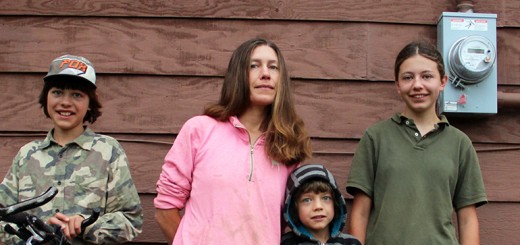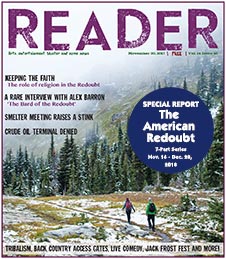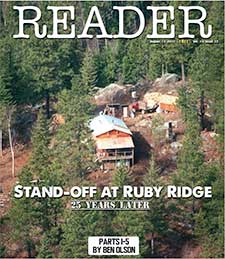City Hall begins process for Phase 3 of downtown revitalization
By Zach Hagadone
Reader Staff
The third phase of a long-running downtown revitalization project is entering its beginning stages, with Sandpoint Construction Manager Erik Bush and Public Works Director Holly Ellis giving a presentation on preliminary concepts March 5 to the City Council.
“We’ve got two overarching priorities with this project: one is intersection improvements and the other one’s corridor improvements,” said Bush, who also serves as the city’s urban forester.
Phase 3 of the revitalization project focuses on the area from First Avenue north of Bridge Street to Superior Street in the south. That follows street redesigns on Cedar Street from Fifth to First Avenue in 2018, and from Cedar to Church Street on First in 2020.
Of particular importance in Phase 3 will be the intersection at Bridge and First, which “has been problematic” for years, Bush said, as well as the intersection at First and Superior.
The short-term concept for Bridge and First would include barriers that restrict left turns from Bridge onto First. The First and Superior intersection is envisioned to include a roundabout, as recommended in the city’s 2012 downtown street design guide. A similar solution was suggested in the city’s downtown waterfront design competition.
“These are certainly not the end-all, be-all solutions — they need to be vetted further and of course with any council comment,” Bush said.
“We realize this is a really impactful project in the short-term and the long-term — in the short-term for our businesses and residents. It will be impactful as far as day-to-day,” he added. “In the long-term, hopefully, we hope that it really makes Sandpoint even more attractive for visitors and everyone else.”
Councilor Rick Howarth emphasized that the Bridge and First intersection is “very complex” and asked city planners to focus on solving the traffic issues there. In addition, he encouraged staff and council alike “to be diligent in our design, but let’s not overdesign.”
“We have a tendency in this town to like very elaborate, expensive designs,” he added. “The waterfront revitalization is a great example of that. You guys all rejected that, or the new administration said we can’t afford that. Let’s make sure that we do designs that are cost-effective as well. Nice, but cost-effective. You can do both.”
Councilor Pam Duquette also referred to the inclusion of elements from the downtown waterfront design competition — including a “gateway” entry arch on First Avenue — which the city undertook in 2023 but the current council shelved for being unrealistic and too costly.
“I have an issue with showing pieces of the design competition because we did take that off the implementation table,” she said. “I believe that might get people a little roused.”
Otherwise, Duquette’s request of planners was to incorporate “something that’s safe [and] functional” for cyclists of all ages for biking downtown, “which is ridiculous” on Bridge Street.
Going forward, the city will draft a request for proposals and identify a design team. Then the council will consider approval of a professional services agreement and conduct public outreach before design can begin.
A traffic study, utilities reconstruction, pedestrian improvements, stormwater treatment, street trees and parking will all follow, with funding from a combination of Sandpoint Urban Renewal Agency funds and utilities.
Bush estimated that the city will be working on design at least for the next year and a half.
“This is pretty much it for the next three years,” Sandpoint Mayor Jeremy Grimm said. “I mean, when you look out and think of what we’re going to do at the sewer plant, this is the only other major pot of money — and that pot of money is coming from urban renewal. These aren’t dollars we can spend really anywhere else in town. …
“I’m super excited to proceed on this project,” he added. “It’s going to be one of the few major improvement projects that we will do in the next two-and-a-half years.”










 Coming up this week! Don’t miss Live Music, the Summer Sampler, the Art Party, Monarch Grind, the Sandpoint Renaissance Faire, and more! See the full list of events in the
Coming up this week! Don’t miss Live Music, the Summer Sampler, the Art Party, Monarch Grind, the Sandpoint Renaissance Faire, and more! See the full list of events in the 